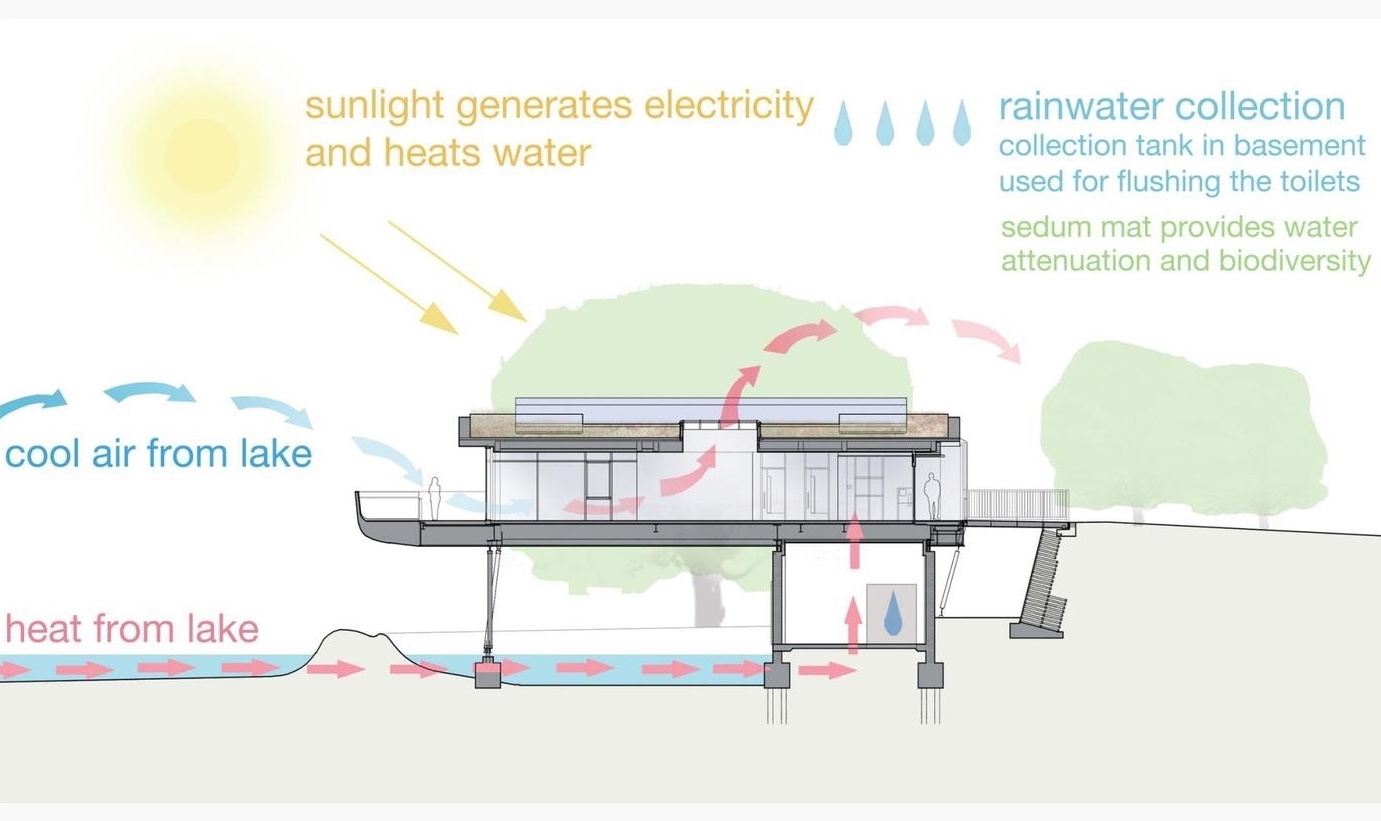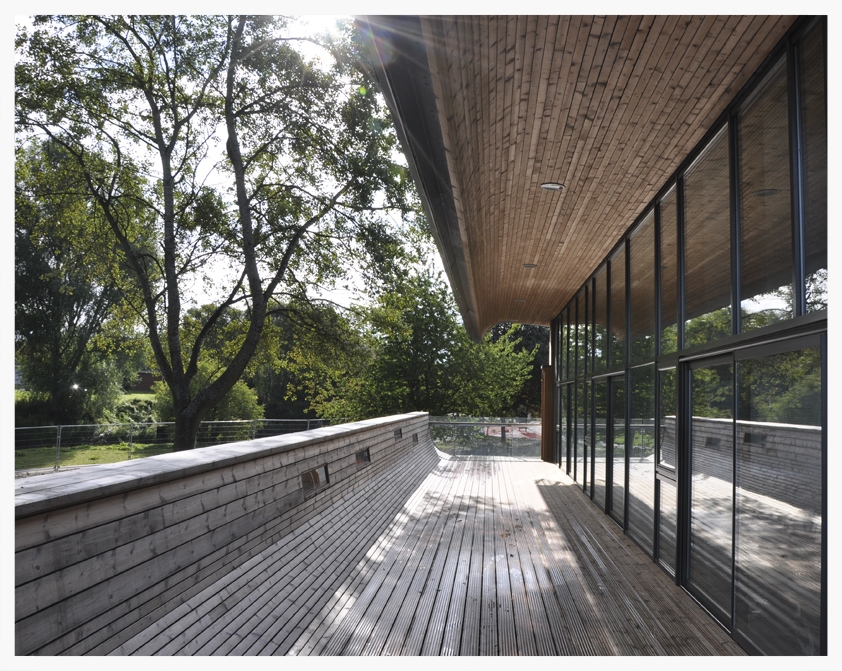Westport Lake Visitor & Field Study Centre
DETAILS
Location:
Westport Lake
Value:
£1.3M
Services:
Architecture
Completion:
Completed July 2009
CONTEXT
The site is a Local Nature Reserve with an access bridge over the Trent and Mersey canal. The location of the building was proposed to be adjacent to the existing car park; however two major sewer lines with 10m restrictions influenced the final position. Extensive public consultation exercises took place, both on the site and with visits to nearby schools and newspaper features. A local community group, Friends of Westport Lake, provided Walker Simpson with valuable historic site information. The location of the Centre is in the position of a former water inlet to the lake and an artificial beach. The history of the nearby Staffordshire Potteries was the subject of the Interpretation Display and murals were constructed with local participation including tiles found on the site. The site was subject to anti social behaviour at night and residents on the opposite side of the canal were concerned that any development should alleviate this problem. The design was carefully developed with this in mind. The raised building is accessed over a pedestrian bridge, which can be easily secured at night. Bringing the water under the building created not only a habitat for wildlife, but prevented congregation points under the building. The new Visitor Centre provides a landmark in North Staffordshire for boaters across the canal network; therefore it was import to create vistas to both the canal and the lake. The roof form opens up to the north east and west and is in-filled with full height glazed walls. Consultation with an Ecologist was undertaken as part of the planning process with consideration of positioning with regard to migrating bats and flight paths of Canada geese.
The building has achieved an EXCELLENT BREEAM Rating.
MATERIALS
The building, constructed using reclaimed brick (including Staffordshire Blue bricks) and a timber glulam frame, is clad in sustainable timber, energy efficient glazing and lime rendered straw bales. The roof is covered in a sedum mat for storm water attenuation, insulation and biodiversity purposes. The straw bales provide high levels of insulation combined with low embodied energy. The energy demands are minimised by the super insulation; the residual energy demands are mostly met by renewable energy technologies including a lake source heat pump, solar thermal panels and photovoltaic panels. The building is not connected to the public storm water sewer and water is collected from the roof and decks to flush the toilets in the boaters shower room, some water discharges back into the lake.
CONSTRUCTION
Featured in Detail.de magazine as one of only 12 projects selected from around the world, the building is set on pile foundations due to the poor soil conditions and the proximity of the lake creating a high water table. Loading constraints on the access canal bridge and poor ground directed the main structure solution as a lightweight timber frame. A number of primary steel elements were introduced in the structural deck due to the large spans, but the reach and size of the crane was minimised due to the access restrictions. The upper structure was constructed off the floor deck using portable lifting plant. The frame is constructed from a series of glulam beams with steel connectors with engineered CLT joists between the primary glulams. The curved roof edge and balustrade was constructed using plywood formers with layers of curved ply screwed into place.
The base of the building is constructed in mass brickwork, a one and half brick thick (partially curved) wall of reclaimed bricks with lime mortar. The first floor structural deck is supported on slender green oak columns with stainless steel pin joints along the water’s edge and supported on the reclaimed brick walls with galvanised steel connectors. The solid walls at first floor are constructed in straw bales, supplied and installed by the specialist subcontractor Amazonnails. The bales are non loadbearing and are tied to the timber posts for wind loading. The bales are reinforced by small columns and areas of compacted loose straw were used to infill at the primary column positions. The columns are effectively inside the straw, omitting any cold bridging and enhancing the thermal insulation of the wall.
TESTIMONIALS
“The Westport Lake Visitor Centre has added a much-needed and much-loved improvement to the already highly popular Local Nature Reserve in which it stands. The Centre has provided a warm welcome whatever the circumstances, whether as a place for quiet enjoyment and reflection for carers' groups, or as the heart of the hustle and bustle associated with a half-term playscheme, when excited children have been informed and entertained, whilst their parents have enjoyed their delight, as well as some welcome refreshment”.
Guy Corbett-Marshall, Chief Executive, Staffordshire Wildlife Trust




